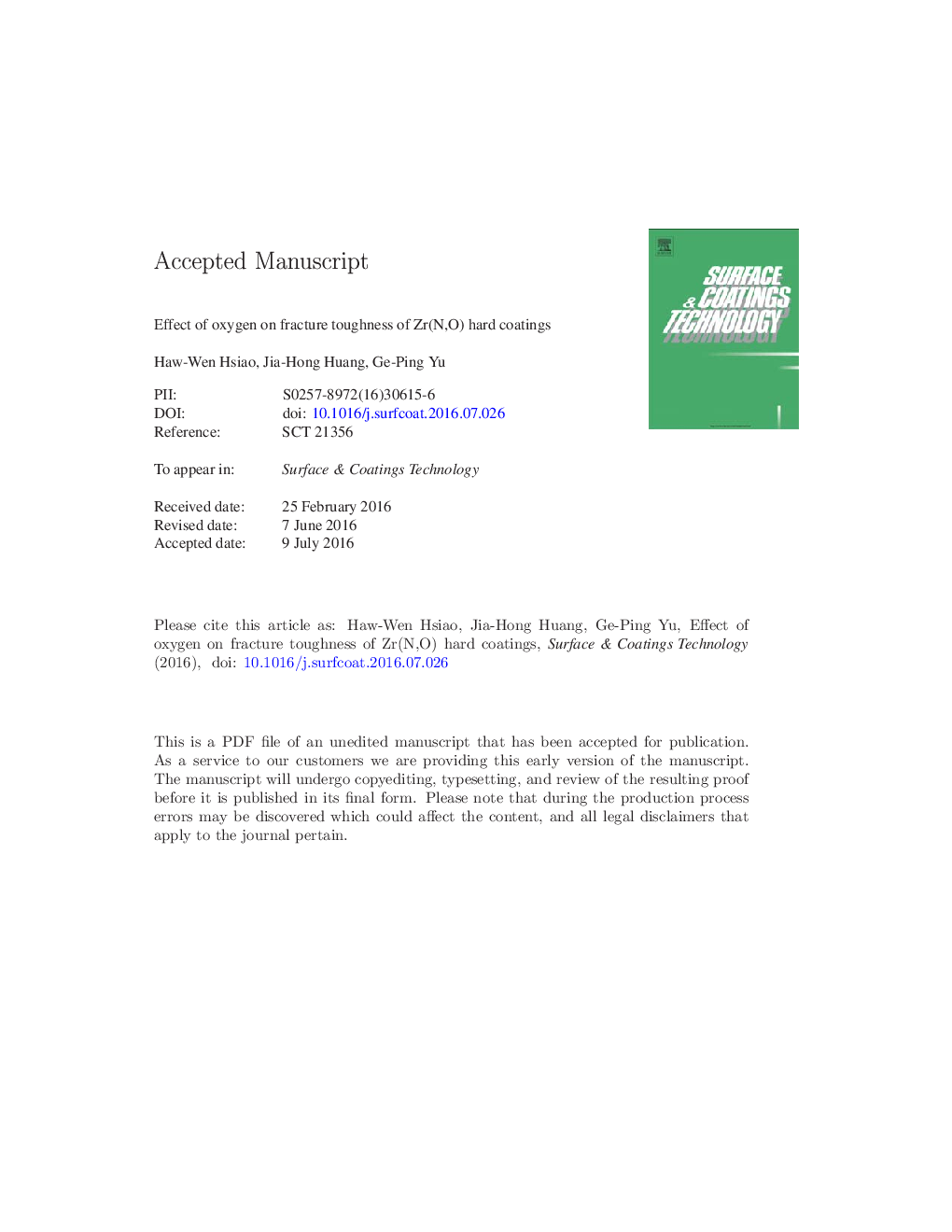| کد مقاله | کد نشریه | سال انتشار | مقاله انگلیسی | نسخه تمام متن |
|---|---|---|---|---|
| 8024985 | 1517576 | 2016 | 42 صفحه PDF | دانلود رایگان |
عنوان انگلیسی مقاله ISI
Effect of oxygen on fracture toughness of Zr(N,O) hard coatings
دانلود مقاله + سفارش ترجمه
دانلود مقاله ISI انگلیسی
رایگان برای ایرانیان
موضوعات مرتبط
مهندسی و علوم پایه
مهندسی مواد
فناوری نانو (نانو تکنولوژی)
پیش نمایش صفحه اول مقاله

چکیده انگلیسی
The objectives of this study were to measure the fracture toughness (Gc) of Zr(N,O) hard coatings using internal energy induced cracking (IEIC) method, and to investigate the effect of oxygen on the fracture toughness of the Zr(N,O) coatings. Zr(N,O) coatings were deposited by unbalanced magnetron sputtering with different oxygen flow rates while maintaining constant nitrogen and argon flow rates. The elastic constants of the Zr(N,O) coatings were determined by nanoindentation, residual stress was measured by laser curvature method and the coating thickness was measured from cross-sectional images by scanning electron microscopy (SEM). Using the data of elastic constants, residual stress and coating thickness, Gc could be obtained. The results showed that Gc was texture dependent; for ZrN coatings with (111) texture Gc was 26.7 ± 2.1 J/m2 while that for coatings with (200) texture was 9.0 ± 0.9 J/m2. The fracture toughness of Zr(N,O) coatings containing small amount of zirconium oxynitride remained nearly the same as that of ZrN with (200) texture ranging from 8.7 ± 0.9 to 8.9 ± 0.6 J/m2. Both oxygen flow and oxygen contents were found to affect the structure and the accompanying properties of the Zr(N,O) coatings. Oxygen flow may interfere the migration of Zr adatoms and the subsequent film formation; consequently, the texture of Zr(N,O) coatings switched from (111) to (200). The oxygen contents of the Zr(N,O) coatings increased, but not substantially, with increasing oxygen flow rate. Since lower energy processing parameters were used in this study, the formation of oxide or oxynitride phases was not as distinct as that in our previous studies. The fractography showed that the main crack propagated stepwise. The crack initiation may occur due to the edge stress acting at local defects ahead of the edge inside the film. The stress distribution due to free edge effect could move with the crack front and consequently drove the main crack propagating stepwise.
ناشر
Database: Elsevier - ScienceDirect (ساینس دایرکت)
Journal: Surface and Coatings Technology - Volume 304, 25 October 2016, Pages 330-339
Journal: Surface and Coatings Technology - Volume 304, 25 October 2016, Pages 330-339
نویسندگان
Haw-Wen Hsiao, Jia-Hong Huang, Ge-Ping Yu,